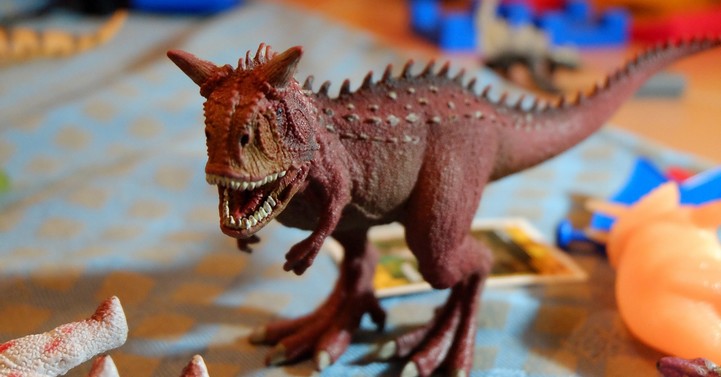
Toys are an important part of children’s learning in child care, but providers need to choose carefully to keep children safe. According to U.S. Consumer Product Safety Commission estimates, in one year, 150,000 toy-related injuries were serious enough to require hospital emergency room treatment. Falls are the most frequent kind of accident, but many serious injuries result from children swallowing small parts, placing tiny toys in noses or ears, and from cutting themselves on sharp edges. The following suggestions can help keep child care a safe, fun time.
Select Toys with Care
- Choose carefully. Look for good design and high-quality construction in the toys you place in the classroom.
- Watch out for toys that have sharp edges, small parts, or sharp points. Avoid toys that produce extremely loud noises, which can damage hearing, and propelled objects, which can injure eyes.
- Include toys that suit the children’s age, interest, and abilities. Avoid toys that are too complex for young children. Many toys have a suggested age range to help you choose toys that are both appealing and safe.
- Read the labels. Look for safety information such as “Not recommended for children under 3 years of age,” or “non-toxic” on toys likely to end up in little mouths, or “washable/hygienic materials” on stuffed toys and dolls.
- Look for the UL (Underwriters Laboratories) seal on electrical toys. This seal indicates that the electrical parts have been tested for safety.
Teach Proper Use of Toys
- Check the instructions and explain to each child how to use the toy.
- Always try to supervise children while they play. Learn to spot an accident about to happen.
- Check toys periodically for broken parts and potential hazards. A dangerous toy should be repaired immediately or thrown away. Sharp or splintered edges on wooden toys should be sanded smooth. Use only non-toxic paint on toys or containers that children come in contact with. Check outdoor toys for rust and weak or sharp parts that could become hazardous.
- Teach children to put their toys away so they do not get broken or create a tripping hazard.
- Use toy shelves for storage. Open shelves allow the children to see favorite toys and return them to the shelf after play. Be sure the shelf is sturdy and won’t tip over if a child climbs on it.
Avoid Seven Common Toy Dangers
- Sharp edges: Toys made of brittle plastic or glass can break easily, exposing sharp points and edges. Wooden, metal, and plastic toys sometimes have sharp edges due to poor construction.
- Small parts: Tiny toys and toys with small, removable parts can be swallowed or become lodged in a child’s windpipe, ears, or nostrils. The squeakers in some squeeze toys can be removed and possibly swallowed. The seams of poorly constructed stuffed dolls or animals can break open and release small pellets that also can be swallowed or inhaled.
- Loud noises: Some noise-making toys can reach noise levels that can damage hearing.
- Sharp points: Broken toys can expose dangerous prongs and knife-sharp points. Pins and staples on dolls’ clothes, hair, and accessories can easily puncture the skin of an unsuspecting child. Even a teddy bear or stuffed toy can be assembled with wires that can cut or stab.
- Propelled objects: Projectiles – guided missiles and other flying toys – can be turned into weapons and cause injury, to the eyes in particular. Children should never be permitted to play with adult lawn darts or other hobby or sporting equipment with sharp points. Arrows or darts used by children should have soft cork tips, rubber suction cups, or other protective tips to prevent injury.
- Electric toys: Electric toys that are improperly constructed, wired, or used can shock or burn. Electric toys must meet mandatory requirements for maximum surface temperatures, electrical construction, and prominent warning labels. Electric toys with heating elements are recommended only for children over age 8. Children should be taught to use electric toys cautiously and under adult supervision.
- Wrong toy for the wrong age: Toys that may be safe for older children can be extremely dangerous in the hands of little ones.
Use Extra Care with Toys for Infants and Toddlers
- Choose toys for very young children with extra care. Playthings that are safe for older children can be hazardous to little ones. Keep in mind that toddlers trip and fall easily, and that, with infants, everything goes into the mouth.
-
When choosing a toy for a toddler or infant, make sure it:
- Is too large to be swallowed.
- Does not have detachable pieces that can lodge in the windpipe, ears, or nostrils.
- Will not break easily, leaving jagged edges.
- Has no sharp edges or points.
- Has not been put together with easily exposed pins, wires, staples, or nails.
- Is labeled “non-toxic.”
- Can’t pinch fingers or catch hair.
For More Information
To learn more about toy safety in child care, check out the following eXtension Alliance for Better Child Care articles:
- Creating a Safe Child Care Environment that Supports Positive Behavior and Exploration
- Other Ways to Disinfect Toys and Surfaces in Child Care Settings
- Things to Consider When Choosing Toys and Materials for Child Care
- Age-Appropriate Toy Ideas for Child Care
